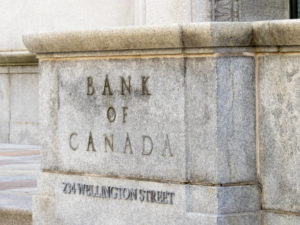
|
|
|
General Leslie Blais 7 Sep

|
|
|
General Leslie Blais 5 Sep
The Canadian economy weakened surprisingly more in the second quarter than the market and the Bank of Canada expected. Real GDP edged downward by a 0.2% annual rate in Q2. The consensus was looking for a 1.2% rise. The modest decline followed a downwardly revised 2.6% growth pace in Q1. (Originally, Q1 growth was posted at 3.1%.) According to the latest monthly data, growth dipped by 0.2% in June, and the advance estimate for economic growth in July was essentially unchanged. This implies that the third quarter got off to a weak start.
The Bank of Canada forecasted growth of 1.5% in Q2 and Q3 in its latest Monetary Policy Report released in July. The central bank is now justified in pausing interest rate hikes when it meets again on September 6th. Today’s report is consistent with the recent rise in unemployment. It suggests that excess demand is diminishing, even when accounting for such special dampening factors as the expansive wildfires and the BC port strike.
Some details of Q2 Growth
Housing investment fell 2.1% in Q2, the fifth consecutive quarterly decline, led by a sharp drop in new construction and renovations. No surprise, given the higher borrowing costs and lower demand for mortgage funds, as the BoC raised the overnight rate to 4.75% in Q2. Despite higher mortgage rates, home resale activity rose in Q2, posting the first increase since the last quarter of 2021.
Significantly, the growth in consumer spending slowed appreciably in Q2 and was revised downward in Q1.
Bottom Line
The weakness in today’s data release may be a harbinger of the peak in interest rates. Inflation is still an issue, but the 5% policy rate should be high enough to return inflation to its 2% target in the next year or so. As annual mortgage renewals peak in 2026, the increase in monthly payments will further slow economic activity and break the back of inflation.
The Bank of Canada will be slow to ease monetary policy, cutting rates only gradually–likely beginning in the middle of next year. In the meantime, the central bank will continue to assert its determination to do whatever it takes to achieve sustained disinflationary forces.
Today’s release of the US jobs report for August supports the view that the Canadian overnight rate has peaked at 5%. (The Canadian jobs report is due next Friday). Though the headline number of job gains in the US came in at a higher-than-expected 187,000, the unemployment rate rose to 3.8% as labour force participation picked up, growth in hourly wages was modest, and job gains in June and July were revised downward.
In Canada, 5-year bond yields have fallen to 3.83%, well below their recent peak shown in the chart below.